Named after a favorite patriotic Hungarian poet, Vörösmarty Square is centrally located and easy to reach from most areas of Budapest, making it an ideal location for shopping or just strolling.
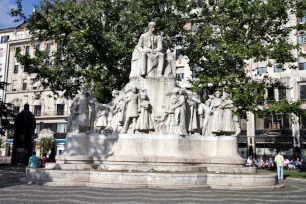
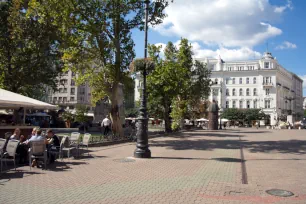
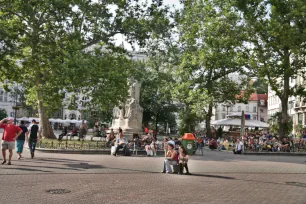
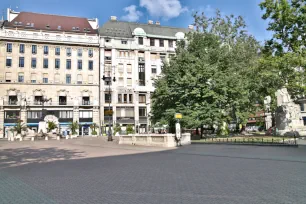
Vörösmarty Square is one of the busiest places in the downtown section of Budapest. This area is a hubbub of activity, boasting luxury stores, antique shops, a famous pastry shop and several other retailing establishments. It is also the start of the city’s most famous shopping street, Váci Utca.
In the nineteenth century the square was known under many different names, including Theater Square and Gisele Square, but since 1926 it has been known as Vörösmarty Square, in honor of Mihály Vörösmarty.
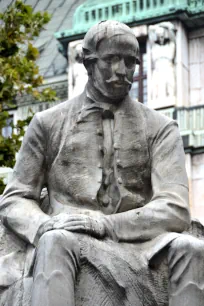
Mihály Vörösmarty
Early nineteenth century Hungarian poet Mihály Vörösmarty was an author of plays and poetry, considered by his contemporaries to be a romanticist. However, he is best known for his patriotic lyrics, and it is for that reason that his statue stands in this square in the middle of Budapest. His most notable works were his national epics, noted for their beautiful language, including Zalan’s Flight (1825), Erlan (1825), and Two Neighboring Castles (1831).
The monument of Vörösmarty, erected in 1908, was made by Ede Telcs, a Hungarian sculptor. It shows the poet sitting on a pedestal of twenty-three limestone blocks in the center of the square. He is surrounded by figures representing various classes of society, including a farmer and a peasant girl, people in traditional Magyar dress, a student, and a worker with his wife and young son.
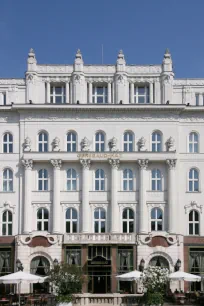
Gerbeaud House
Another always-busy attraction on the square is the Gerbeaud House, a wonderful old-fashioned pastry shop owned by a Swiss family whose yummy delights have thrilled patrons for years. The café’s traditions go all the way back to 1858, when it was founded by Henrik Kugler. In 1884 Kugler joined hands with the Swiss confectioner Emile Gerbeaud. Gerbeaud became famous for his cakes and pastry, which are still made according to his original recipes.
The interior is ornately decorated with marble tables and beautiful wall coverings, and is large enough to hold about three hundred customers at a time. Be sure to stop here for coffee and pastries!
Metro Line 1
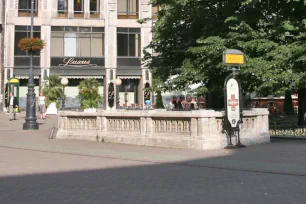
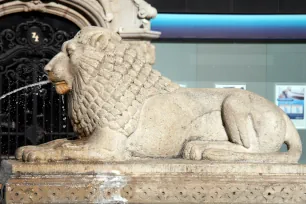
Right in front of the Gerbeaud House is the first metro stop of the M1 metro line, the oldest metro line on the European continent. The line was built in 1894-1896. It starts here at Vörösmarty tér and today ends at Mexikói ut. Along the way it makes stops at some of Budapest’s most famous attractions, including the Opera House, Heroes’ Square and the Széchenyi Baths at Városliget. The underground metro stations have a delightful, quaint charm.
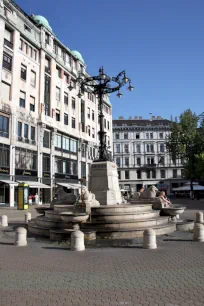
Lion Fountain
Nearby stands the Lion Fountain (Oroszlános kút), a popular meeting point. Children love to climb on the lion statues, and tourists often rest on the fountain’s steps. The fountain was built in 1985 at the site of a well. It was created by László Wild and sculptor Ágnes Péter, who was responsible for the lion statues. The four stone lions surround an ornate iron lamppost, which dates from an earlier period.
Vigadó
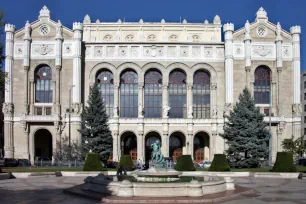
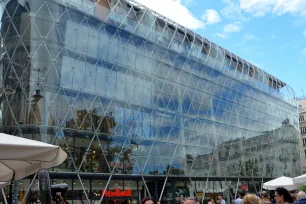
On another side of the square, you’ll find the Vigadó or concert hall, built in 1859-64, based on the designs of Frigyes Feszl (1821-1884) and thought to be an excellent example of Hungarian Romantic architecture. The hall has played host to many of the world’s most famous musical artists for more than a century.
Vörösmarty1
To the east, Vörösmarty Square is bordered by a strikingly modern building, the Vörösmarty1 Office Center. It was designed by architect György Fazakas in cooperation with the French architect Jean-Paul Viguier.
The glass-clad structure, which contrasts starkly with its environment, boasts a fourteen-meter-high atrium. Vörösmarty1 replaced the Communist-era ORI building, a structure in Socialist Realism style that was demolished in 2006.
- Next: Memento Park
- More Sights & Attractions in Budapest

